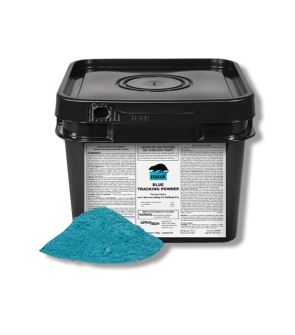Gain access to personalized product screening, the best pricing, rewards, and more!
Most Effective Products
Chlorophacinone
In earlier years, rodent poisons contained Warfarin, an anticoagulant designed to prevent the clotting of blood for rats and mice, eventually leading to death via internal bleeding. For a while, it was an effective active ingredient, that is until rats and mice started to develop a resistance against such rodenticides.
It was then that rodenticide manufacturers went back to the drawing board and developed what is called “second-generation anticoagulants” to speed up the killing process and lessen rodent resistance. One such active rodenticide ingredient that has successfully eliminated rodents is chlorphacinone.
Solutions Pest & Lawn is proud to carry products containing this powerful active ingredient. On this page, you can learn more about chlorophacinone and why it effectively kills even the most challenging rodent infestations. You can also shop for the products we have in our inventory.
What is Cholorphacinone?
Chlorophacinone is a multiple-feed anticoagulant rodenticide. This means that they generally require that an animal eat multiple doses of the bait over several days for death to occur. It is known as a superwarfarin and was developed to improve the Warfarin formula, making it more effective.
How Does Chlorphacinone Work?
Mode of Action
Chlorophacinone is a second-generation anticoagulant with a mode of action that prevents blood clotting by decreasing Vitamin K levels in the blood. Once an infected rodent runs out of vitamin K they ultimately die by bleeding to death internally.
Benefits of Chlorphacinone
Chlorphacinone improves Wayfarin as it is a much more potent product and has a more substantial initial effect on feeding rats and mice. Its formula does not induce bait-shyness and remains stable and weather-resistant.
Drawbacks of Chlorphacinone
Though it is more potent than Warfarin, Chlorophacinone requires a prolonged feeding period to work, so controlling problem rodents is slow and will require a lot of patience.
Is Chlorphacinone Safe?
Chlorophacinone is safe when applied according to label directions. The active ingredient should be placed in bait stations to reduce the chances of pets or children getting ahold of or tasting the bait.
Gloves should be worn during the application. Wash hands after handling the bait and avoid all contact with the mouth. Vitamin K1 is an antidote for accidental ingestion, and prolonged treatment is required because it has a long half-life (up to several months).
What To Expect

Since Chlorophacinone is a multi-feed anticoagulant, rodents must feed on the bait multiple times until they receive a lethal dosage. After feeding on enough rodenticide, death can occur 3 to 10 days after feeding has begun.
Be patient and persistent with your baiting of this active ingredient, and monitor your bait placements to see if they are being eaten consistently.
Featured Products
Rozol Tracking Powder— is used to control rats and mice. The powder is applied in areas where the targeted rodents walk, causing them to ingest it when they groom themselves. It can be easily used between walls and other hard-to-reach areas.







